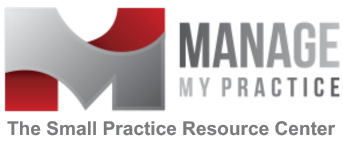There are a million reasons a patient no-shows for an appointment, or calls right before their scheduled appointment to cancel. Some of the reasons are unavoidable, but all of them cost you money. Regardless of your specialty, location or patient population, no-shows...
Blog
Back to the the Blog!
Where have I been? Ten years after I started my consulting business and started blogging, in 2018 I stopped blogging when I took a very interesting interim position at the University of Washington in Seattle. In 2019 I accepted the position permanently and we moved to...
Blockchain for Beginners
Do you know what blockchain is? Everyone has heard of blockchain, but not many people understand what it really is - myself included. I went looking for an approachable introduction to the technology and found this excellent Wired video (posted below) that describes...
How to Ask for Advice
A question I recently answered on Quora was: How would you go about asking a business professional that you admire, for advice on starting up a business? My answer could just as easily apply to asking someone to mentor you. Here's what I said: Asking someone for...
New Medicare Card and Reason Code N793
If you've seen new reason code N793 on your Medicare remittance advice lately and wonder what it is, you now know it relates to the new Medicare card. The description for N793 is: Alert: CMS is changing from the Medicare Health Insurance Claim Number (HICN aka...
25 Principles for Adult Behavior in Healthcare
This month John Perry Barlow died. Described by Stephen Levy of Wired as a “cowboy, poet, romantic, family man, philosopher, and ultimately, the bard of the digital revolution”, Barlow penned a list he called the “25 Principles of Adult Behavior,” as a series of...
Credit Card Signatures: Bye Bye
What follows is an article adapted from one published in the Infintech News January 30, 2018. Infintech is my Credit Card on File gateway and credit card processor for my consulting business. It is also a company I recommend to clients. I've been working with my rep,...
So You Want to Be a Practice Management Consultant?
I recently was asked how to start consulting in the medical practice management space. I love consulting, but it's not nearly as glamorous and freewheeling as it might look. Don't Quit Your Day Job Unless you have an amazing referral stream or money to put into...
How to See Patients When the Physician Isn’t Credentialed Yet
Credentialing new physicians is the definition of Catch-22. You can't start the process too early as payers won't accept the application (especially if the physician doesn't have their malpractice in place), and by the time payers will accept the application to begin...
Bad Online Reviews and How to Respond to Them
It is important to address every online review - good or bad - publicly so that others reading the review will know you are responsive to patient communication and concerns. Here's How to Respond Here are some simple steps to addressing a bad review, potentially...
Bringing you the latest healthcare news!
The Manage My Practice Blog keeps our readers up to date with the latest healthcare news, trends and analysis.
Quick Links
Get in touch
Phone: (919) 370 0504

